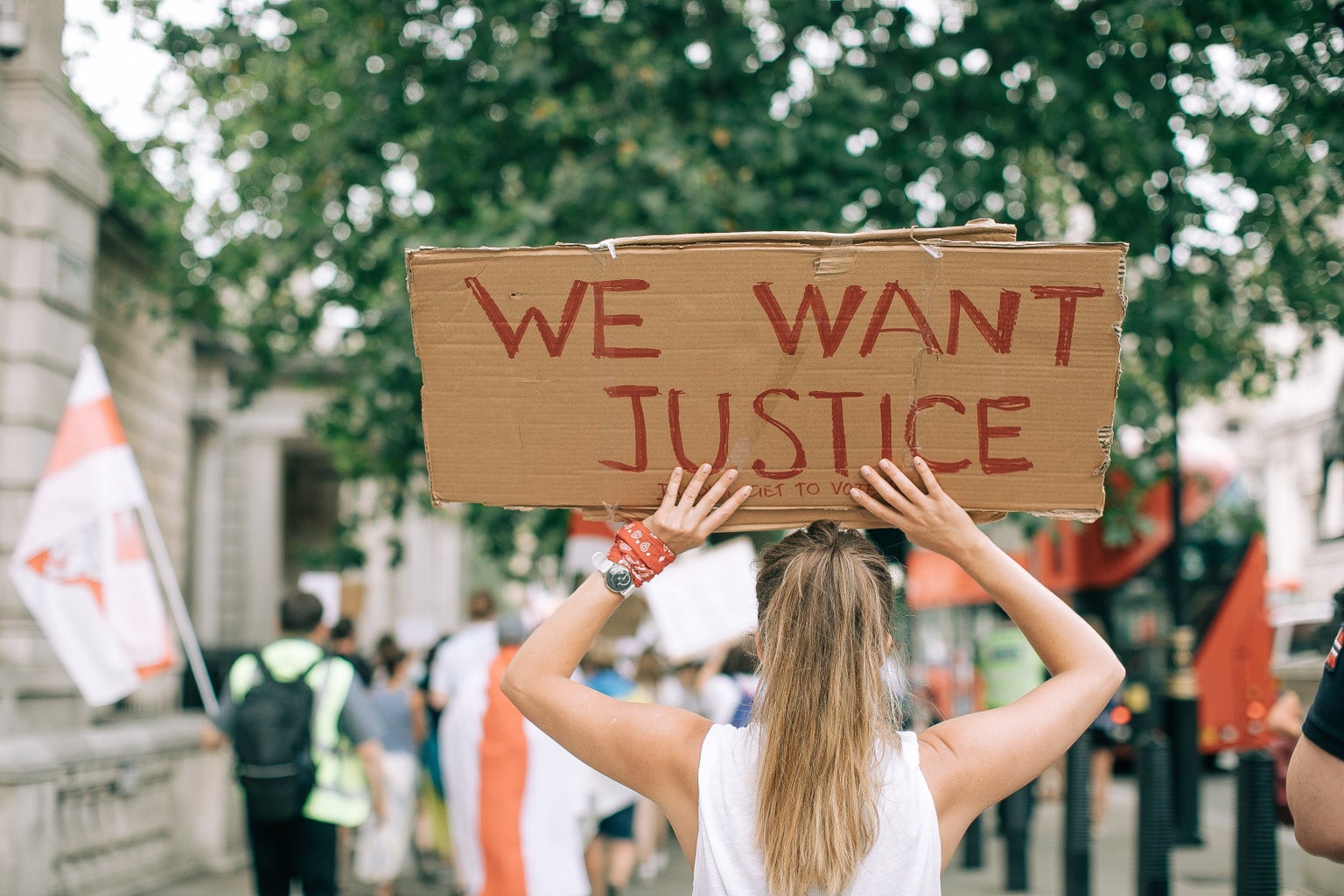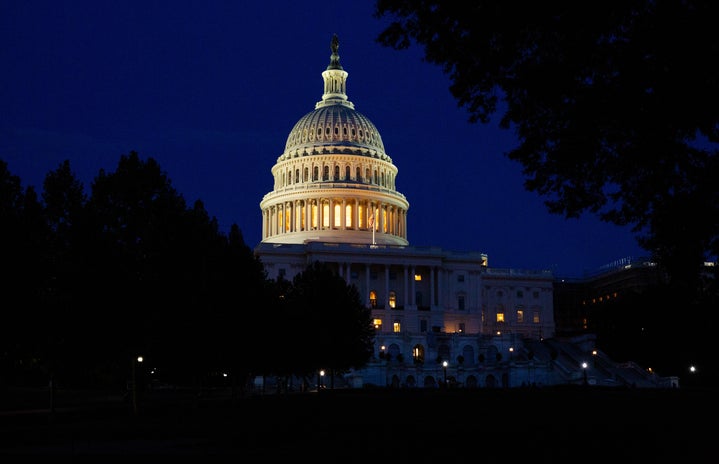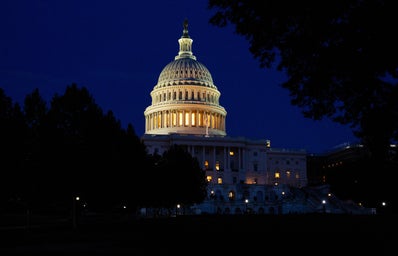“This is not who we are.” “This is un-American.” “We are better than this.” All of these sentiments have dominated the social media of politicians on both sides of the aisle in the wake of yesterday’s insurrection in the Capitol. It’s easy to understand where the sentiment comes from – the scenes from Washington seemed explosive and dystopian, and stressing how unprecedented and uncharacteristic they are is a desperate plea to return to normalcy and decency. But it doesn’t take a close examination of the rioters to notice a recurring theme.
The members of the D.C. mob self-identify as patriots and loyal Americans. Stars and stripes peppered the crowd, alongside a plethora of Confederate flags and thin blue lines. And of course, yesterday’s riot was incited, encouraged, and, in every implicit manner possible, condoned by the president of the country that politicians have sworn these people do not represent.
America is so much better than what we’re seeing today.
— Joe Biden (@JoeBiden) January 6, 2021
It’s easy to decry yesterday’s events as yet another entry in the seemingly unending roster of historically catastrophic incidents that have characterized 2020 and bled over into the New Year. However, as many before me have discussed, even the slightest reflection reveals that the problems of the past year run far, far deeper than a slew of bad luck.
Most people who have taken any kind of English or writing class are familiar with a simple diagram of narrative structure, one that begins with an exposition, builds to a climax and ends in resolution. As much as it feels like 2020, and perhaps the four years of Trump’s presidency, has been a long and difficult story, this is far from an isolated aberration in American history. Rather, it’s the climax after years and years of rising action, a detonation of the attitudes and behavior this country has fostered and entertained without acknowledging the potential consequences.
Before the 2016 election cycle even concluded, news outlets had already dedicated pages and pages of coverage to in-depth profiles of overwhelmingly white pro-Trump communities, eager to humanize and if not champion, at least represent them to their detractors in a more forgiving light. In and of itself, this may not say much, but it’s part of a longer trend of forgiveness, understatement and blind eyes that have overlooked a thousand minor offenses from white America or male America and, in doing so, enabled far more egregious ones. Stanford Rapist Brock Turner was described more often by his designation as a college athlete than by the crime he committed, and was let off with a mere three-month sentence for fear that anything longer would “ruin his life.” When Donald Trump’s infamous Access Hollywood tapes leaked, his brags about grabbing women “by the p*ssy” were diminished almost as quickly as they were heard by his supporters as “locker room talk.” And whilst it’s easy for those who do not support Trump to decry this attitude as the work of MAGA Republicans, that would ignore the far greater, more pervasive and permissive “boys will be boys” attitude rampant across the country, regardless of political allegiance.
For proof of permissiveness, one only has to look at footage of yesterday’s insurrection. It was a matter of months ago when Black Lives Matter protestors in D.C. were met with hordes of National Guardsmen in full riot gear; BLM protests across the nation were attacked by policemen armed like the bad guys from a sci-fi movie and deploying tear gas, rubber bullets, and pure brute force on peaceful protestors.
Even when offering supposed denouncements of yesterday’s insurrectionists, several on the right have pointed to the summer’s BLM protests as a justification for the events of yesterday, stating that both were okay. But even ignoring the fact that the BLM protests were about Black people being murdered by law enforcement whereas yesterday’s riot was an attempt to overturn a Democratic election, ignoring the fact that conservatives were decrying BLM protests of any form, whether labeling Colin Kapernick’s kneeling during the anthem “too disrespectful” or calling physical assemblies “too disruptive/violent,” ignoring the fact that the supporters of yesterday’s protests – during which one of the highest federal buildings in the country was breached and robbed – were the same ones crying, “When the looting starts, the shooting starts,” when the issue at hand was the right of Black people to live… even ignoring all this, the disparity between the protests is staggering when looking at the response of police and law enforcement officials. The National Guard declined to appear, and far from using bullets and water cannons, police were spotted taking selfies with protestors and ushering an elderly insurrectionist politely downstairs by the arm. People have noted the contrast to an elderly BLM protestor who had his head dashed against concrete by the police this summer.
Yesterday may have been an extreme example, but it was certainly not an unprecedented one. The police have different standards for white people and for Black people and people of color. This is the key to perhaps the biggest misunderstanding behind the insistence that “this is not who we are.” The “we” in question assumes a single, unified United States. It assumes a single set of American values and ideals. And whilst this is, perhaps, the idea politicians would like to believe and propagate if yesterday has reminded us of anything, it is that this is simply not true.

“This is not who we are” assumes that there is or was a “we” to aspire to; it promises a time in the past when all was well and better. But for Black people, people of color, and all other marginalized groups, what this fabled time in the nation’s history actually is remains a mystery. There hasn’t been a time in the USA’s 244 years in which the experience and opportunities for all those living in the country have been equal. Slavery and Jim Crow laws, the Chinese Exclusion Act and Japanese Internment Camps, the Indian Removal Act and the AIDS crisis – just about every chapter of national history belies the inequality and oppression that runs rampant against marginalized groups.
Even in periods of perceived liberal utopianism, this “underbelly” – and really, it feels glib to refer to as an “underbelly” what seems to be a fundamental facet of national DNA – ran rampant. Whatever white liberals may like to believe, racism in modern America did not begin with Trump. Reuters reported a rise in hate crimes against ethnic minorities following the election of Obama. The murder of 17-year-old Trayvon Martin occurred under Obama’s presidency.
While Trump indisputably enabled blatant and extreme racism and brought it to the forefront of public conversation, he didn’t invent it. He drew on what was already there, on what has always been there, deeply ingrained in the core of the United States of America.
Even as Democracy appears to have been shaken to its very foundation yesterday, hope comes in the form of the results of the Georgia runoff elections – both Rev. Raphael Warnock and Jon Ossoff won their bids for senate, and in doing so flipped the senate for Democratic control. But this win isn’t evidence of a return to normal. The flipping of Georgia to a blue state, including the election of its first Black senator, is no happy accident. It’s the result of years of tireless hard work by predominantly Black organizers such as Stacey Abrams, activists and grassroots organizations. Make no mistake: the work being done is not an effort to restore Georgia or American Democracy to some former imagined greatness; it’s a project to provide voice and representation to the very people that the electoral system has, by design, suppressed and silenced and ignored since its foundation.
Perhaps the most sobering footage from yesterday’s attack came in the wake of the carnage. The halls of the Capitol, vandalized and ransacked by white nationalists, were left to be cleaned up by Black and brown custodial staff.
It was a bleak reminder that in the institutionalized pecking order of this country, BIPOC are meant to survive – or not – at the whim of white behavior. The coddling and encouragement of white nationalism is something tha’s been ingrained into this country since its inception. Every measure of progress made towards a more just society is an effort to change the system, not restore it. And in order for the USA to truly become a land of “liberty and justice for all,” our leadership needs to acknowledge that what’s necessary is a change and overhaul of our systems and values, not a return to the past.
Yes, this is who we are. We must acknowledge that if we’re ever to become better.


